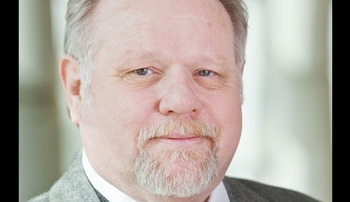Lee Mosley, Ph.D., associate professor in the department of pharmacology and experimental neuroscience, is one the UNMC investigators involved in this week’s Joint Research Symposium.
The three-day event pairs a group of UNMC investigators with peers from Chinese institutions. This year’s symposium is focused on inflammation and disease.
 |
Lee Mosley, Ph.D. |
In lay terms, what aspect of your research will you talk about during the symposium?
My talk will address the effects of neuroinflammation in Parkinson’s disease. Results from our program has shown that the same modified and misfolded proteins that accumulate in Parkinson’s disease are recognized by the immune system as foreign, and induce T cells that react to those proteins. In our model, these T cells exacerbate neuroinflammation, which increases neuronal death and hastens disease progression.
What do you hope to gain from participation in this forum?
We hope to convince the participants that T cells and the immune system play a major role in the inflammatory response associated with neurodegeneration in Parkinson’s disease, and that by immunotherapy, we can attenuate neuroinflammation and spare neurons that are otherwise destined to die in Parkinson’s disease. Naturally, with interactions among a group of investigators with varied interests opens many possibilities for gaining collaborative ventures.
How do you see international collaboration working in the research world?
Collaboration is already an integral component in research. The systems and analyses are now so complex and expensive that collaboration is necessary to answer complex questions. No longer can investigators make inroads using the tools and practices our scientific grandfathers may have used in isolation.
Why is collaboration with China in particular important?
Simply put, it’s a matter of demographics and logistics. According to the National Science Foundation, numbers of science and engineering researchers in the United States and the European Union have grown steadily, while those in China have tripled and in South Korea have doubled. The numbers for researchers in those countries increased from about 1 million in 1995 to nearly 1.5 million in 2007, and those increases are not diminishing. So naturally, more opportunities for collaborative interactions will be available along the Asian rim with more scientists to explore a greater variety of research ventures.